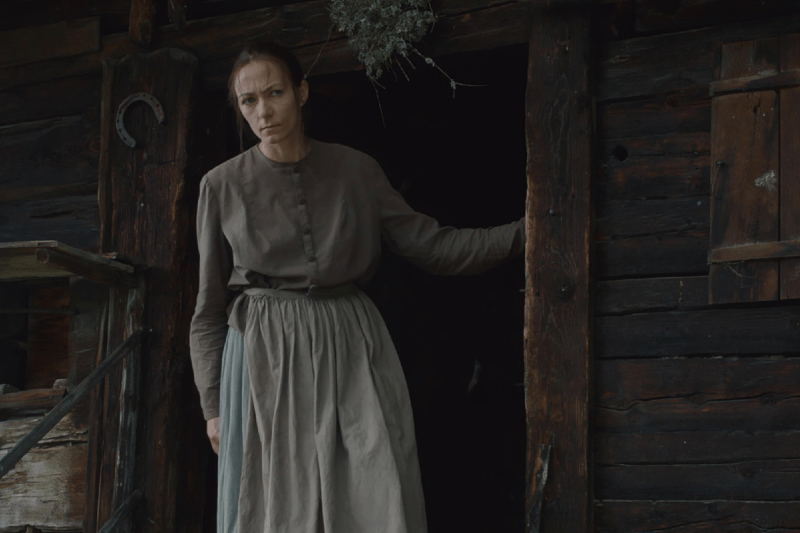Editorials
The Evolution of Male Nudity in Rape Revenge Films
October 5th, 2020 | By Mary Beth McAndrews

The rape revenge genre is known for its sexual violence and exploitation of the female body. Women are brutalized by groups of strange men, who rape and beat victims during excruciatingly long sequences. Importantly, these female protagonists are often shown fully nude, letting viewers take in their entire bodies, ogling their bare breasts and pubic hair. What there isn’t is naked men.
Become a Free Member on Patreon to Receive Our Weekly Newsletter
Even when the wronged woman gets revenge, her rapists are typically given some semblance of modesty whether through clothing or the suds of a bubble bath. Male nudity has been explicitly avoided for decades. But a shift is upon us. From I Spit On Your Grave to Teeth to Revenge, directors tackling the subgenre have moved away from continued exploitation of the female body and instead switched to objectifying the male form. The ever-present male gaze is being questioned.
The Origins of Rape-Revenge
Let’s start at the beginning with Meir Zarchi’s 1978 film I Spit On Your Grave, often called the most controversial film of all time. It earns that epithet as a young writer from the city named Jennifer Hills (Camille Keaton) becomes the target of a group of local boys. About 50 percent of the film’s runtime is dedicated to her torture, rape, and humiliation. Her clothes are ripped off, leaving her naked body to be smashed against a giant rock in the woods. Jennifer is exploited and treated like a piece of meat for both the characters and the viewer.
While Zarchi may not have intended to create enjoyment in these horrific sequences, audiences were still reported cheering for her rape and were excited at the idea of this city girl getting what she deserved. In exposing her entire body, Jennifer is exposing herself to the entire world to be leered at, consumed, and mocked.
As expected in this two-pronged subgenre, Jennifer does get to enact her delicious revenge, from hangings to the castration of the gang’s leader. However, even in the film’s climactic castration, her rapist Johnny is still given a veil of privacy as his penis is hidden under the water. While the viewer was allowed to openly look at Jennifer, Johnny’s own body is kept from the camera, as if prioritizing and maintaining male modesty.
Jennifer does castrate him in the bathtub and reclaims her power, destroying the very thing that violated her. But in reducing the graphic spectacle around the moment, men are protected from actually seeing that violence. While Jennifer’s rape is very explicitly shown over a prolonged period of time, her rapist’s castration happens in a matter of seconds. Here a statement is subconsciously made about whose bodies are meant to be the true objects of the male gaze.
Change in the New Century
Several decades and hundreds of exploitation films later, a shift begins in the late 00s with Mitchell Lichtenstein’s 2007 film, Teeth. While perhaps not a traditional rape-revenge film, Lichenstein creates a play on the subgenre as a devout and abstinent Christian girl, Dawn (Jenn Wexler), is forced to reckon with her sexuality.
Dawn is molested as a child and raped as a teenager, and her body reflexively fights back with a special adaptation called vagina dentata, or a toothed vagina. When she is forced to have sex or be penetrated, she shows her teeth, literally, to punish those who violate her. The punishment is not just a little scratch — it’s complete penile removal.
Unlike the covert castration of I Spit On Your Grave, nothing is left to the imagination. Severed penises are shown laying on the ground while men are screaming, covered in their own blood. As Dawn begins to understand her body, she begins to understand her power and what she can do with vagina dentata.
Again, like in I Spit On Your Grave, there is a climactic castration as Dawn voluntarily removes the penis of her stepbrother who molested her as a child. At this moment, she is in full control of both herself and her stepbrother. She is no longer afraid as she is shown dropping his penis onto the floor. With a satisfying thump, Dawn is no longer someone to be manipulated.
The sexuality she was so afraid of becomes her way to exert control over her life and her body. While she is shown getting sexually assaulted, Dawn is never shown nude, as the nudity pendulum swings drastically in the other direction. Her body is chaste and hidden, while she spits out dismembered members from her vagina.
The male body is visibly disfigured as the camera makes sure to capture close-ups of the detached genitalia lying on dirty floors. However, the naked male body is also never filmed to be objectified or to indicate a switch in the gaze. It is about the separated body part more than showing the male body. Regardless, men are rendered vulnerable. That perceived object of fleshy power is thrown away like trash, just as men throw away women’s bodies.
The Male Body as Spectacle
Then comes Revenge, Coralie Fargeat’s 2017 vision of rape-revenge that works to acknowledge then refute the male gaze. That pendulum of nudity is swinging back again, but not towards the extremes of I Spit On Your Grave. Rather, Fargeat does not make the ruined penis the object of our attention. She ruins the entire male body, in full-frontal views.
Fargeat knows exactly what she wants to achieve as she manipulates both the camera and the audience to look in specific ways. She does not outright reject the male gaze, but uses it to trick the viewer. The character Jen (Matilda Lutz) is filmed like a sex object, enticing someone to believe she is just something to be looked at. From close-ups on her exposed skin to her seductively licking a lollipop, Jen is established as a Lolita character with an open mouth.
But just as a prickly tree pierces Jen’s flesh, Fargeat shoves her cinematic fingers into our eyes. This woman is not a sexualized body, but an agent of violence in the name of justice. While Teeth worked to hide Dawn’s body, Revenge is all about showing off the bodies of both men and women. This way, the viewer can better understand the gendered expectations of nudity in rape-revenge.
Once again, the use of male nudity is prominent in the film’s climax, although this does not include castration. Instead, the naked male body of Jen’s boyfriend Richard (Kevin Janssens) is placed on a level playing field with Jen. The power dynamic between the two of them has been stripped away as both are mostly or completely nude. Their standoff becomes the most basic confrontation of who can catch the other and who can shoot faster.
Caught by surprise, in his birthday suit, Richard is now objectified. The exploitative and well-known male gaze is replaced with a new way of seeing as the camera visually devours his muscular body. At the end of Revenge, no longer is the ruined female body the object of attention; the male body now becomes the spectacle.
Conclusion
Importantly, all of these films – from I Spit On Your Grave and Revenge – are also seen as empowering and honest, never shying away from the horrors of rape and depicting survivors as broken victims. The exploitation of Jennifer Hills’ body is appreciated, never trying to hide the nightmare.
While I agree with that stance and find strength in the rape-revenge genre, there is no denying how the uses of nudity have evolved and challenged preconceived notions about who can be naked on screen. No longer is the traumatized female body meant to be an object of desire. It is finally perceived for what it is: a site of rage, violence, and strength.



